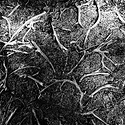pentaxuser
Member
Brian as others have stated the paper is a stop faster so a print of a scene on MGIV that takes10 secs will only take 5 secs on MGV so yes the new exposure time works against you. If at f16 or f22 you haven't got enough time for dodging and burning you might need to either lower the wattage of the bulb or introduce ND in some way
It sounds fro what you are saying that the blacks are blacker but yet the greys are washed out. These two things seem irreconcilable so this puzzles me. Another difference is that the speed of the paper means that you do not need to double the exposure for grades 4 and 5 - there is only a small increase in exposure needed. If you are using these two grades then doubling exposure would lead to overexposure which might explain the "harsher " blacks but not the washed out greys
pentaxuser
It sounds fro what you are saying that the blacks are blacker but yet the greys are washed out. These two things seem irreconcilable so this puzzles me. Another difference is that the speed of the paper means that you do not need to double the exposure for grades 4 and 5 - there is only a small increase in exposure needed. If you are using these two grades then doubling exposure would lead to overexposure which might explain the "harsher " blacks but not the washed out greys
pentaxuser








 1) Are there any LED bulbs that are suitable for VC paper? (2) What are the effects on VC paper? (3) Are these effects the same each time such that once you have worked out the effect you can compensate for or is sit the case that currently the effects vary continuously such that no two prints exposed under the same negative and with the same bulb will ever be the same?
1) Are there any LED bulbs that are suitable for VC paper? (2) What are the effects on VC paper? (3) Are these effects the same each time such that once you have worked out the effect you can compensate for or is sit the case that currently the effects vary continuously such that no two prints exposed under the same negative and with the same bulb will ever be the same? 

